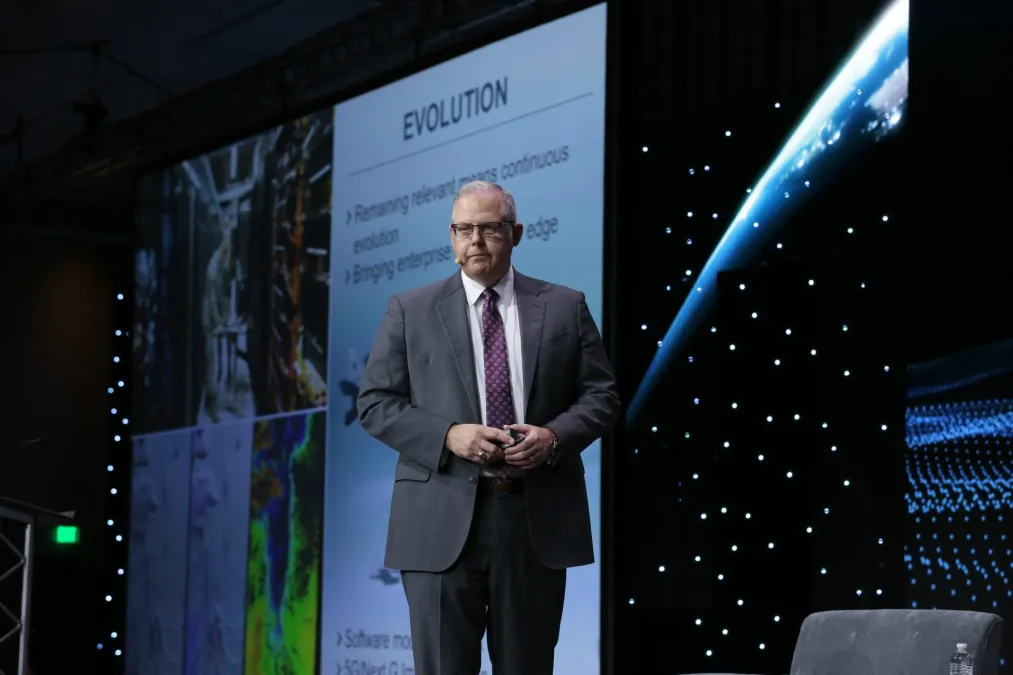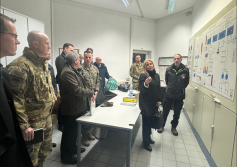Pentagon CIO previews ‘Fulcrum,’ the next digital modernization strategy

KISSIMMEE, Fla. — Aiming to accelerate the Defense Department’s evolution from a hardware-defined to a more adaptable, software-defined enterprise, its chief information officer is preparing to issue a next-generation digital modernization strategy.
“We are going to call it ‘Fulcrum,’” CIO John Sherman told DefenseScoop in an interview on Wednesday. “The June time frame is when you’ll be seeing some release on that. So, we’re polishing it up and getting it ready.”
The forthcoming document, which Sherman also discussed during his keynote at the GEOINT Symposium, is one of multiple fresh policies and resources his team has been preparing to address issues that continue to impede digital modernization and innovation across the department.
“It represents the department’s ambitious Information Technology (IT) Advancement Strategy designed to leverage the power of technology to drive transformative change and serves as a tipping point for catalyzing digital modernization for the warfighter,” DOD spokesperson Cmdr. Tim Gorman told DefenseScoop in an email on Thursday.
In the interview with DefenseScoop, Sherman elaborated on how the new guide has been coming together.
“We brought together a multidisciplinary team from not only the military services, but some of the other agencies, like the Defense Contract Management Agency, etc., for several on-sites to flesh this out,” he explained.
The Fulcrum strategy will build on the DOD’s 2019 defense modernization strategy, which Sherman said was the flagship document. He confirmed that the Pentagon’s Deputy CIO Leslie Beavers has been leading the development of the new plan, and in doing so she’s working closely with the department’s Customer Experience Officer Savanrith “Savan” Kong.
“This [digital modernization strategy] isn’t going to just be [structured] by functional area, it’s going to be cross-cutting. As we look at different lines of effort like providing capabilities and expanding the Joint Force and combined force dominance, modernizing information networks, IT governance, and building the digital workforce — not just cybersecurity, not just C3, not just cloud,” Sherman said at the GEOINT Symposium.
“And a key enabler in this has been our Customer Experience Office, or CXO. We’ve all heard about the ‘fix our computers’ issues. We took this seriously and we brought some super experts back in from industry and elsewhere as we got after this, and we started to solve hard problems,” he added.
Sherman entered the intelligence community in 1997 as a CIA imagery analyst assigned to what was then known as the National Imagery and Mapping Agency. That hub morphed into the National Geospatial-Intelligence Agency, or NGA — and there, Sherman went on to serve in a host of senior executive positions associated with data collection and analysis, homeland security, and more, before he was tapped as DOD’s top IT official.
“As I think about future information technology, again, I harken back to very much of my time in NGA. [The agency] has always had a reputation for being out at the edge. I think about the thousands of deployers NGA has sent downrange over the years, along with our industry colleagues — whether it’s Iraq, Afghanistan, [Combined Joint Task Force-Horn of Africa], Haiti and numerous other places — we’ve always been out at the edge,” Sherman said.
Experiences at NGA “did my heart well,” he said, noting that his time there deeply informed his intent now as CIO to help enable the Pentagon to become a more “rugged, flexible, secure, and resilient” information- and data-driven enterprise.
The new Fulcrum guide is one move he’s making to ensure he can hold his team accountable in accomplishing that aim, he added.






